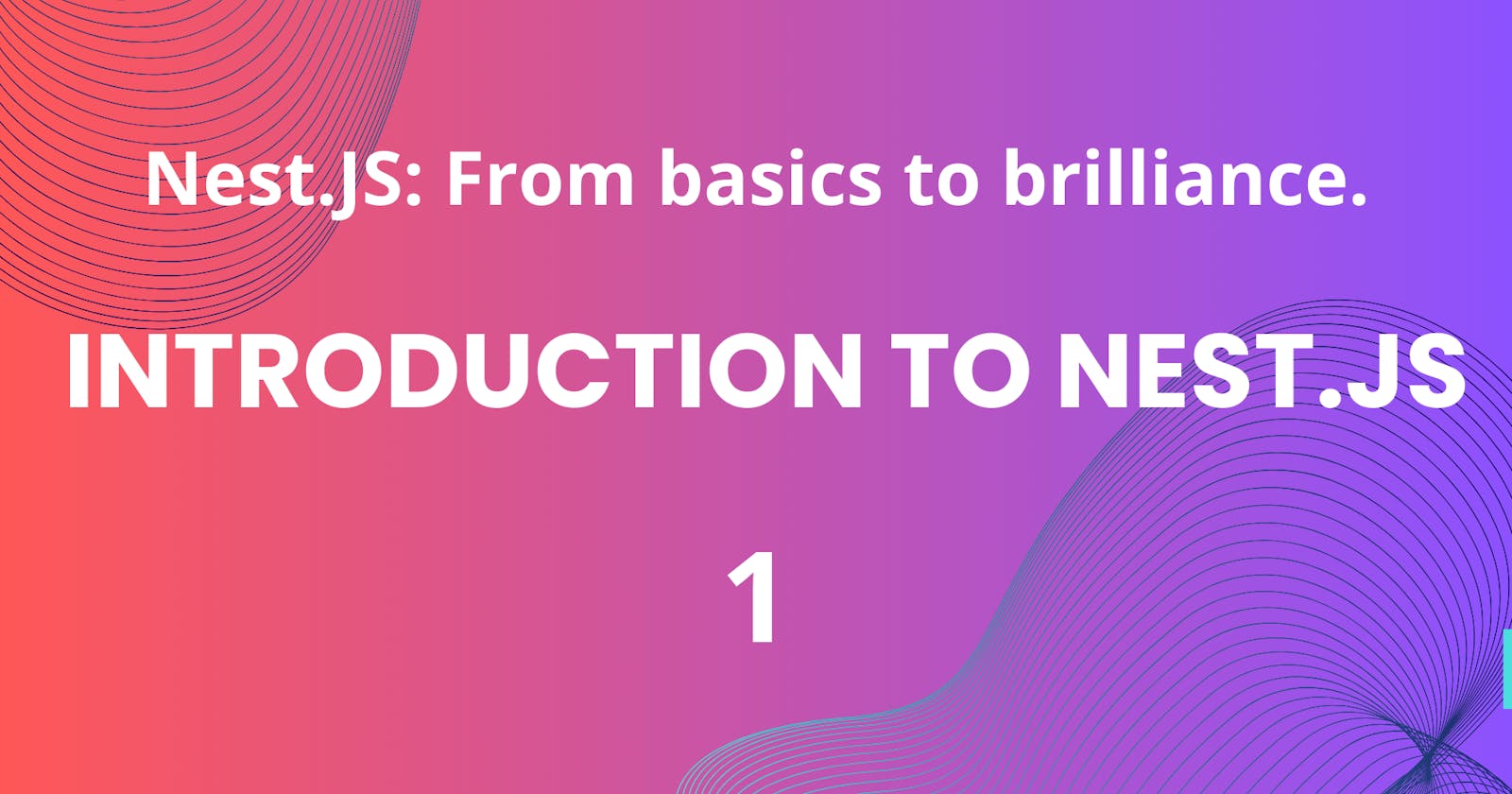Introduction to Nest.JS.
Learn what Nest.JS is, why it is needed, and how it tackles the problems of developer experience.
Overview
Hello there, lovely folks, Welcome to the series Nest.JS: From Basics to Brilliance. The aim of this series is to help you understand the framework from inside and out and get you started creating an enterprise-ready application with the help of Nest.JS. So, let's dive into it and enjoy the series.
Understanding the requirements of Nest.JS.
Before delving into what Nest.JS specifically offers, let's talk about the Node.JS environment. If you've worked with Node.JS before, you know it doesn't come with much pre-set functionality. Developers have to set up everything from scratch, including handling API requests, defining routes, structuring files, organizing code, and naming conventions.
While Node.JS has been around for a while, many frameworks, like Express.JS, have been developed to ease the burden by providing common features out of the box. However, these frameworks still require a fair amount of configuration, especially as your application grows larger. This can become a headache when dealing with significant scalability issues. This is where Nest.JS comes in.
Intro to Nest.JS.
Nest.JS is a framework built on top of Node.JS; it provides the developer's ready-to-go setup and tries to tackle problems of common requirements by creating an abstraction around Node.JS. This lets developers focus on application problems or business logic rather than worrying about tiny configurations such as setting up API routing, middleware, error handling, TypeScript, form validations, and more.
What Nest.JS exactly brings to the table.
Nest.JS simplifies code architecture by offering a straightforward approach, enabling developers to implement highly testable, loosely coupled (modify or replace individual components without affecting the entire system), and easily maintainable code on a large scale. To simplify, Nest.JS is an abstraction over Node.JS, which provides ready boilerplate code and an additional toolkit to ease application development. Moreover, Nest.JS supports both JavaScript and TypeScript, and by default it makes use of the HTTP framework Express.JS, as well as providing the option to switch over and configure Fastify, or other frameworks.

Nest.JS is a flexible framework providing developer's the ability to create modules that are not platform dependent, but not only platform independent to the HTTP frameworks but also other types of applications. It implies that Nest.JS modules can be utilized in various types of applications, regardless of whether they are web applications, REST APIs, microservices, Web Sockets, GraphQL, Cron jobs or other types of software solutions. This versatility makes Nest.JS suitable for a wide range of development scenarios.

I'm glad you found the content helpful! Please LIKE/SHARE/COMMENT. I will try to cover wide range of topics in this series, breaking them down in the simplest way possible to ensure everyone can follow along. stay tuned for more!
Let's catch up on:
